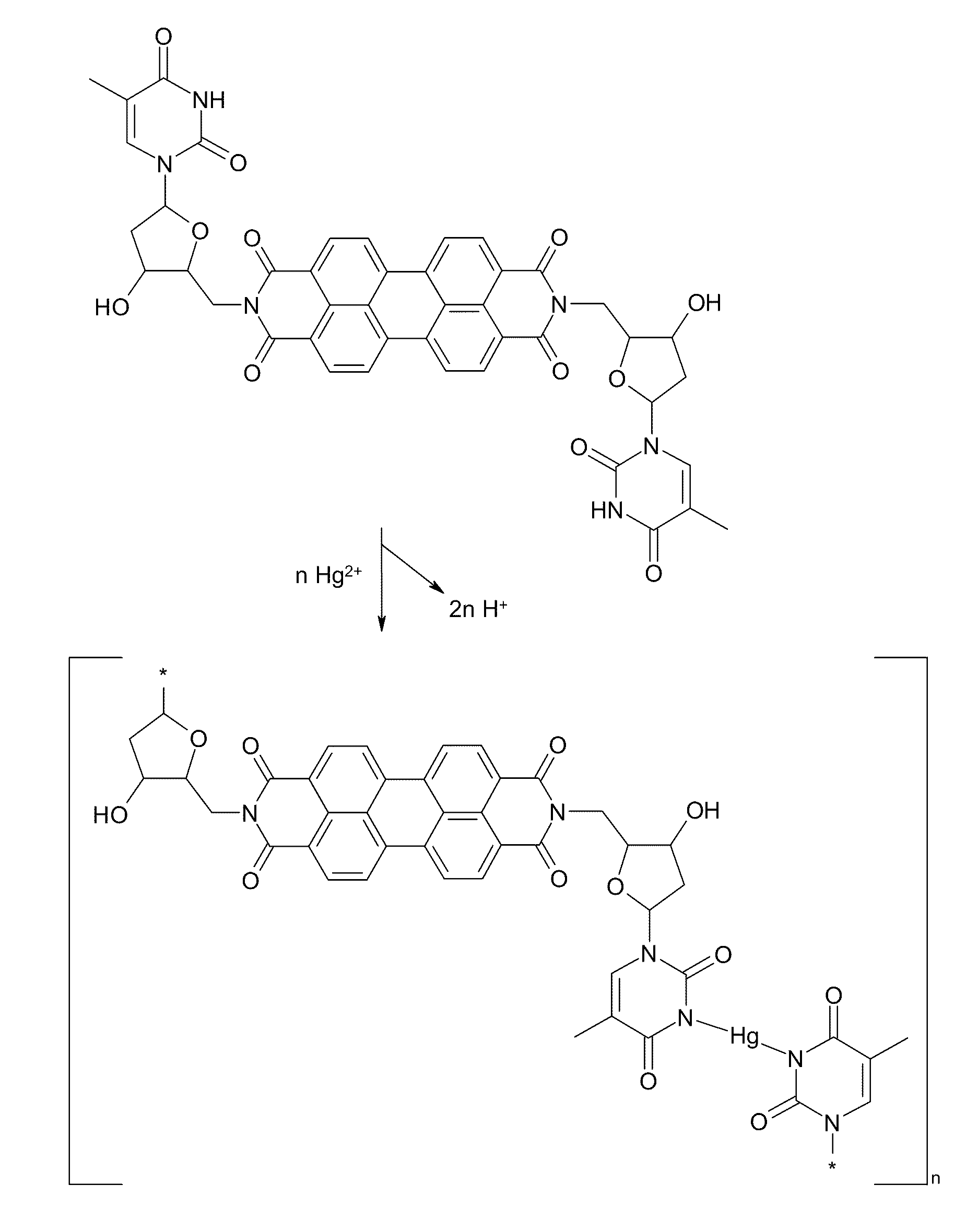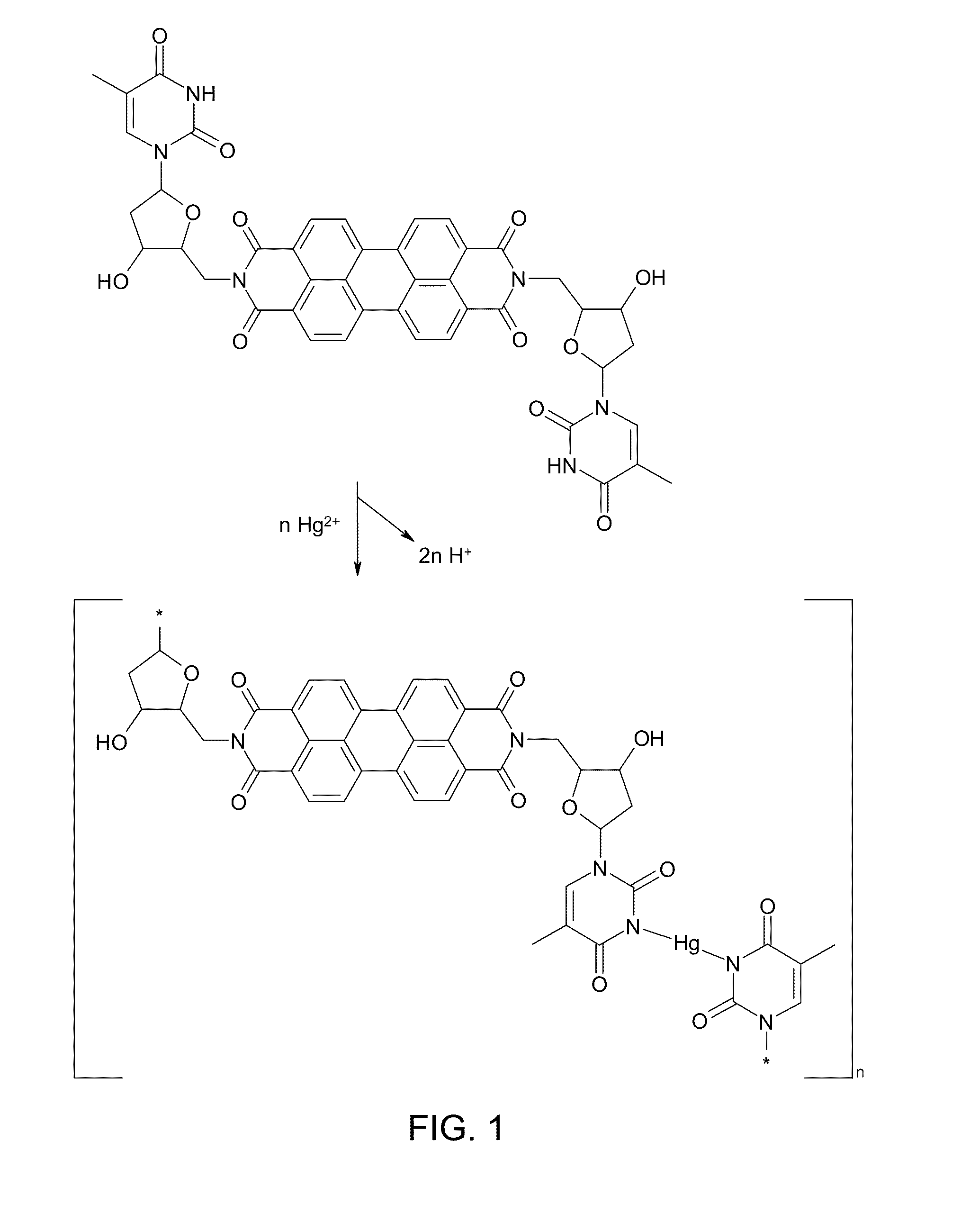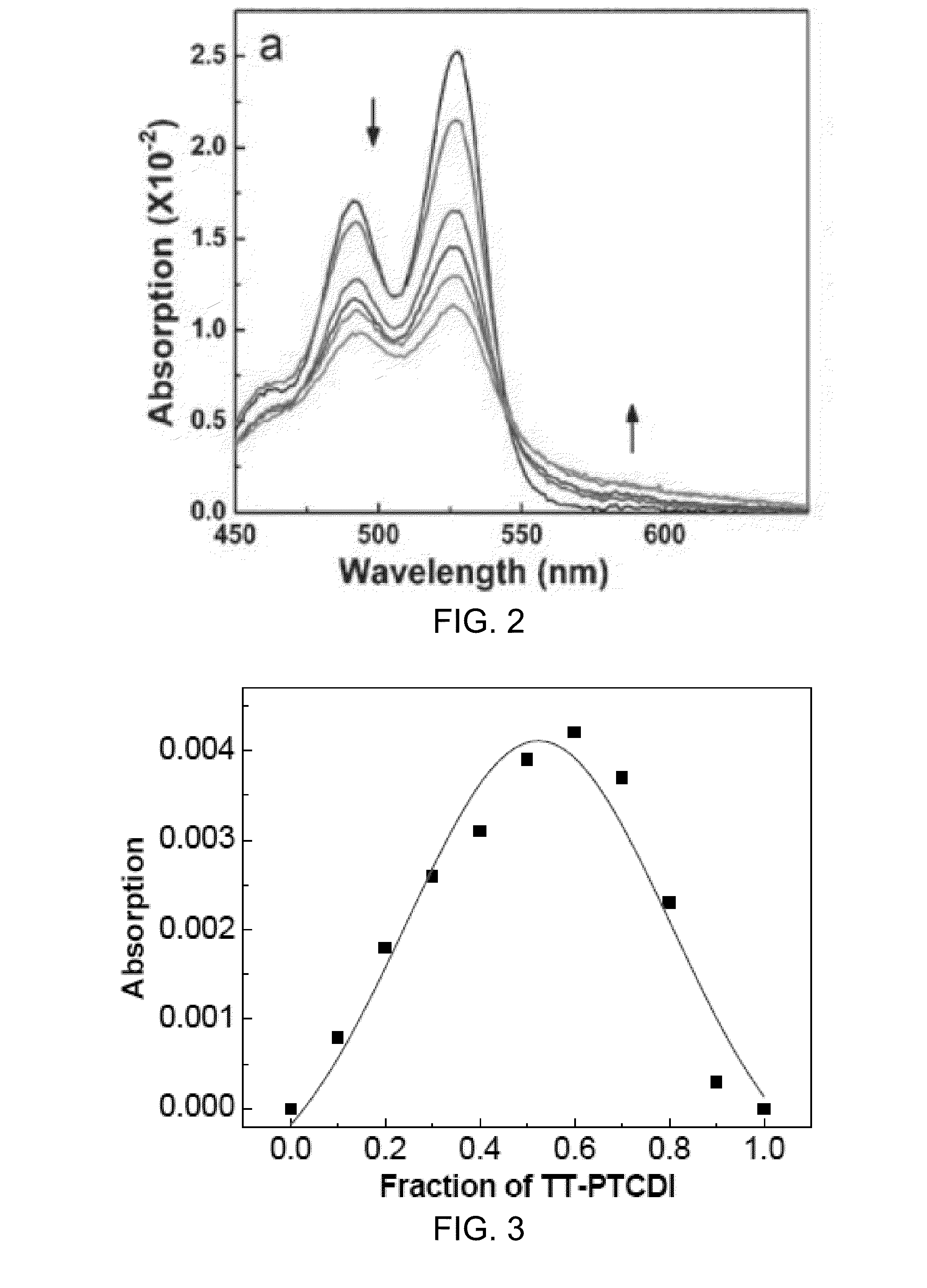Molecular fluorescence sensor for highly sensitive and selective detection of mercury
a fluorescence sensor and selective detection technology, applied in the field of fluorescence materials for mercury detection, can solve the problems of difficult improvement of detection selectivity in the context of interference from coexisting metal ions, serious health and environmental problems, and present a technical hurdle to expedient, cost-effective applications
- Summary
- Abstract
- Description
- Claims
- Application Information
AI Technical Summary
Benefits of technology
Problems solved by technology
Method used
Image
Examples
example
[0051]Dideoxythymidine-perylene-3,4,9,10-tetracarboxylic diimide (TT-PTCDI) was synthesized via the condensation method. Briefly, 3.6 mg (9.2 μmol) 3,4,9,10-perylene-tetracarboxylic dianhydride (Aldrich), 5 mg (21 μmol) 5′-amino-5′-deoxythymidine (Sigma), and 0.6 g imidazole (Fisher) were heated under argon at 120° C. for 3 hours to form a precursor sensor compound. The reaction mixture was cooled to room temperature and dispersed in 10 mL ethanol, followed by addition of 20 mL 2 M HCl in order to close the side ring structure to form the imide compound. The mixture was stirred overnight. The resulting red solid was collected by vacuum filtration through a 0.45 μm membrane filter (Osmonics). The solid was then washed thoroughly with distilled water until the pH of washings turned to neutral. The collected fluorescent compound solid was dried in vacuum at 60° C. TLC: Rf (silica gel / dioxane:CHCl3=75:25)=0.83. All other chemicals were used as received.
[0052]Due to the limited solubilit...
PUM
| Property | Measurement | Unit |
|---|---|---|
| vol % | aaaaa | aaaaa |
| structure | aaaaa | aaaaa |
| fluorescent | aaaaa | aaaaa |
Abstract
Description
Claims
Application Information
 Login to View More
Login to View More - R&D
- Intellectual Property
- Life Sciences
- Materials
- Tech Scout
- Unparalleled Data Quality
- Higher Quality Content
- 60% Fewer Hallucinations
Browse by: Latest US Patents, China's latest patents, Technical Efficacy Thesaurus, Application Domain, Technology Topic, Popular Technical Reports.
© 2025 PatSnap. All rights reserved.Legal|Privacy policy|Modern Slavery Act Transparency Statement|Sitemap|About US| Contact US: help@patsnap.com



